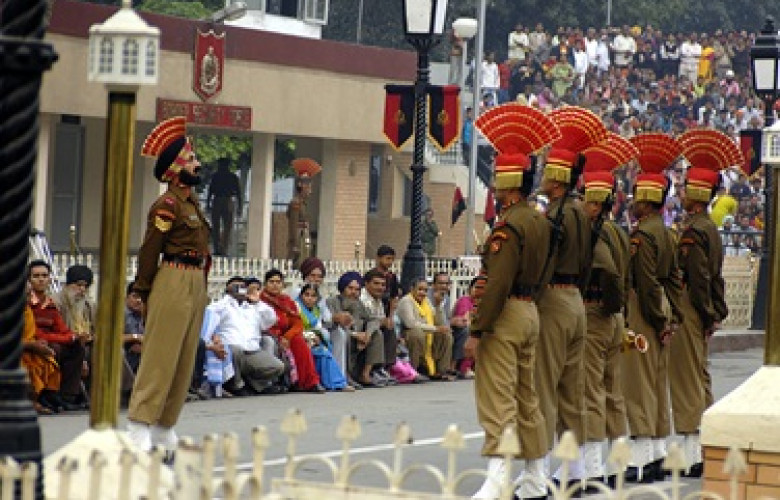The next India-Pakistan crisis could spiral out of control
Huma Rehman, Visiting Research Fellow at the James Martin Center for Non-Proliferation Studies - Middlebury Institute of International Studies
2025-08-22
ASIA
GEOPOLITICS
This article first appeared on The Interpreter, published by the Lowy Institute

The escalation in India-US relations, marked by President Donald Trump’s imposition of 50% tariffs on Indian goods over New Delhi’s continued imports of Russian oil, has created shockwaves. This downturn comes at a critical juncture, just months after a military crisis between India and Pakistan in May, which saw unprecedented missile strikes, drone warfare, and the suspension of key treaties such as the Indus Waters Treaty and Simla Agreement.
The strained US-India relationship not only threatens economic ties but also carries profound implications for future India-Pakistan conflicts. This is particularly concerning for crisis de-escalation and conflict management, which, despite a regularly expressed preference for bilateral negotiations, often involves an active role for third parties such as the United States.
Trump’s renewed engagement with Pakistan’s military leadership, including hosting Pakistan’s Army Chief Field Marshal Asim Munir at the White House and exploring preferential trade terms, has deeply irked New Delhi. Meanwhile, Trump has doubled-down on his claim that the US brokered the May India-Pakistan ceasefire, which India vehemently denies. Trump’s narrative undermines India’s position, complicates life for the Modi government domestically, and has caused added diplomatic friction.
In tandem, the US treatment of India and Pakistan as equal partners, especially through Secretary of State Marco Rubio’s announcement of bilateral talks at a neutral venue, has alarmed Indian leaders, who oppose third-party mediation on Kashmir.
Meanwhile, India’s refusal to condemn Russia’s invasion of Ukraine and its continued economic engagement with Moscow, particularly in the energy sector, has frustrated the United States and its partners. Washington views these as undermining efforts to isolate Russia. Moreover, India’s purchase of the S-400 missile defence system from Russia places it at risk of sanctions under the Countering America’s Adversaries Through Sanctions Act (CAATSA) – a persistent source of tension.
India’s Prime Minister Narendra Modi has sought to adopt a nationalistic posture as he faces growing pressure to resist the US “bullying”. Opposition leader Rahul Gandhi has sought to leverage Trump’s “dead economy” jibe about India to attack the government. This comes as New Delhi prepares to host Russian President Vladimir Putin for an upcoming visit and continues outreach to China with Modi expected to attend the Shanghai Cooperation Organisation summit in the coming weeks.
This downturn in US-India relations, if it persists, could significantly change how the US responds to the next military crisis between India and Pakistan. Historically, the US has played a restraining role on Pakistan during crises, such as the 1999 Kargil War. However, Trump’s renewed embrace of Islamabad, which includes the resumption of military aid and continued International Monetary Fund support, introduces a new calculation.
On the eve of the May conflict, Modi announced a new military doctrine that includes: a) no geographic limits on retaliatory strikes, such as targeting Punjab, not just Kashmir; b) rejection of nuclear blackmail, meaning India will conduct strikes regardless of Pakistan’s nuclear threats; and c) the suspension of diplomatic ties until terrorism is addressed. With tensions in US ties, India will find it tempting to prioritise the use of force over diplomacy when dealing with Pakistan. Without Washington’s restraining role, there is an increasing risk of uncontrolled escalation.
This carries wider implications for security in South Asia.
This shift could delay or disrupt defence cooperation, arms sales, joint military exercises, and intelligence sharing mechanisms. If India retaliates with counter-tariffs, a trade war could escalate. The Quad partnership involving the US, India, Japan, and Australia could also weaken or fracture, benefiting China.
So, can the US-India relationship recover?
A limited diplomatic reset, built around a well-planned Modi-Trump meeting, might ease tensions. But fundamental disagreements on Russia and Pakistan will persist.
India will continue to pursue its multi-alignment strategy. New Delhi has looked to diversify partnerships by deepening ties with the European Union, the United Kingdom, and countries of the Middle East, while also maintaining BRICS and SCO engagement.
For Pakistan, the challenge is amicably balancing relations with both the United States and China, which will be far from simple.
What is clear is that the much-vaunted “guardrails” which once prevented India-Pakistan crises from spiralling into full-scale war are off. With reduced chances for US mediation, hardened military doctrines, and great-power manoeuvring, future conflicts could be deadlier and less predictable.
Photo: appaji / Giridhar Appaji Nag Y, CC BY 2.0 , via Wikimedia Commons
Membership
NZIIA membership is open to anyone interested in understanding the importance of global affairs to the political and economic well-being of New Zealand.